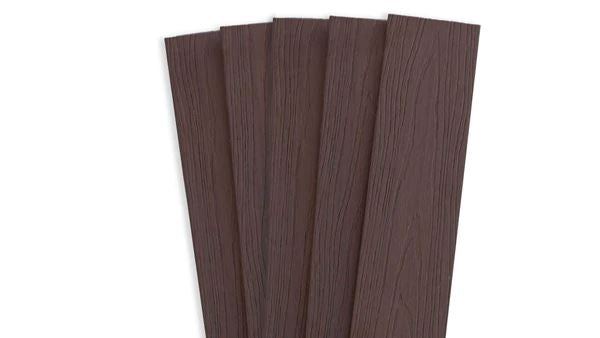Composite fencing, made from a combination of natural fibers and recycled wood and bonded with plastic, is an eco-friendly alternative to wood or vinyl fencing. However, there are some misconceptions about composite fencing. Let's tackle the five common myths we come across.
1. Myth: composite fencing looks fake and unnatural.
- Reality: Modern composite fencing is designed to mimic the look and texture of natural wood, with various colors and styles available to suit different aesthetics. Manufacturers have improved composite materials to offer more realistic appearances, making it hard to distinguish from traditional wood at a glance.

2. Myth: composite fencing is not durable.
- Reality: Composite fencing is engineered for durability, resisting rot, bacteria, mold, insect damage and even salt water. It withstands weather conditions like extreme sunlight, wind, rain and snow better than wood. Unlike wood, which can warp, crack or decay over time, composite fencing maintains its integrity for years, making it an excellent choice for long-term outdoor use.
3. Myth: composite fencing is more expensive than it's worth.
- Reality: While the upfront cost of composite fencing can be higher than some materials, its low maintenance and longevity make it a cost-effective choice over time. Unlike wood fences that require regular painting, staining or repairs, composite fences require minimal upkeep, leading to significant savings over the years. You won't be purchasing gallons of paint or stain or spending time maintaining composite fencing because it comes with a 30-year warranty and holds up to five times longer than the average wood fence.
4. Myth: composite fences are not eco-friendly.
- Reality: Composite fencing is often made from recycled materials, such as wood fibers and recycled plastic, which helps reduce waste and lower the demand for new raw materials. This environmentally friendly production process makes composite fencing a sustainable choice compared to traditional options that rely on new lumber. What's more, Frame It All repurposes plastics that would otherwise end up in landfills and oceans over time. A single cap picket panel diverts more than 40 pounds of recycled plastic from our natural environment.
5. Myth: composite fencing is hard to install.
- Reality: Composite fencing can be installed similarly to traditional fencing materials, and some products even come in easy-to-assemble panel systems. While professional installation is available, many homeowners find composite fencing suitable for do-it-yourself projects, especially with pre-assembled fence panels or modular designs. Composite fencing is often more customizable than wood and vinyl fencing as well.

Frame It All
We offer cap composite fencing as well as individual pickets to meet your needs. They come in a variety of attractive colors and styles, and you can even get free fence samples so you can choose the right color. Founded in 1999 in New York by landscape designer Anthony Topping, Frame It All also provides gardening products and accessories designed to bring inspiration and innovation to gardeners around the county. Feel free to contact us with any questions you may have, or check out our frequently asked questions about composite fencing.

